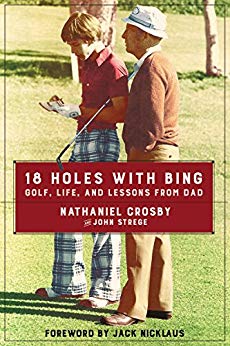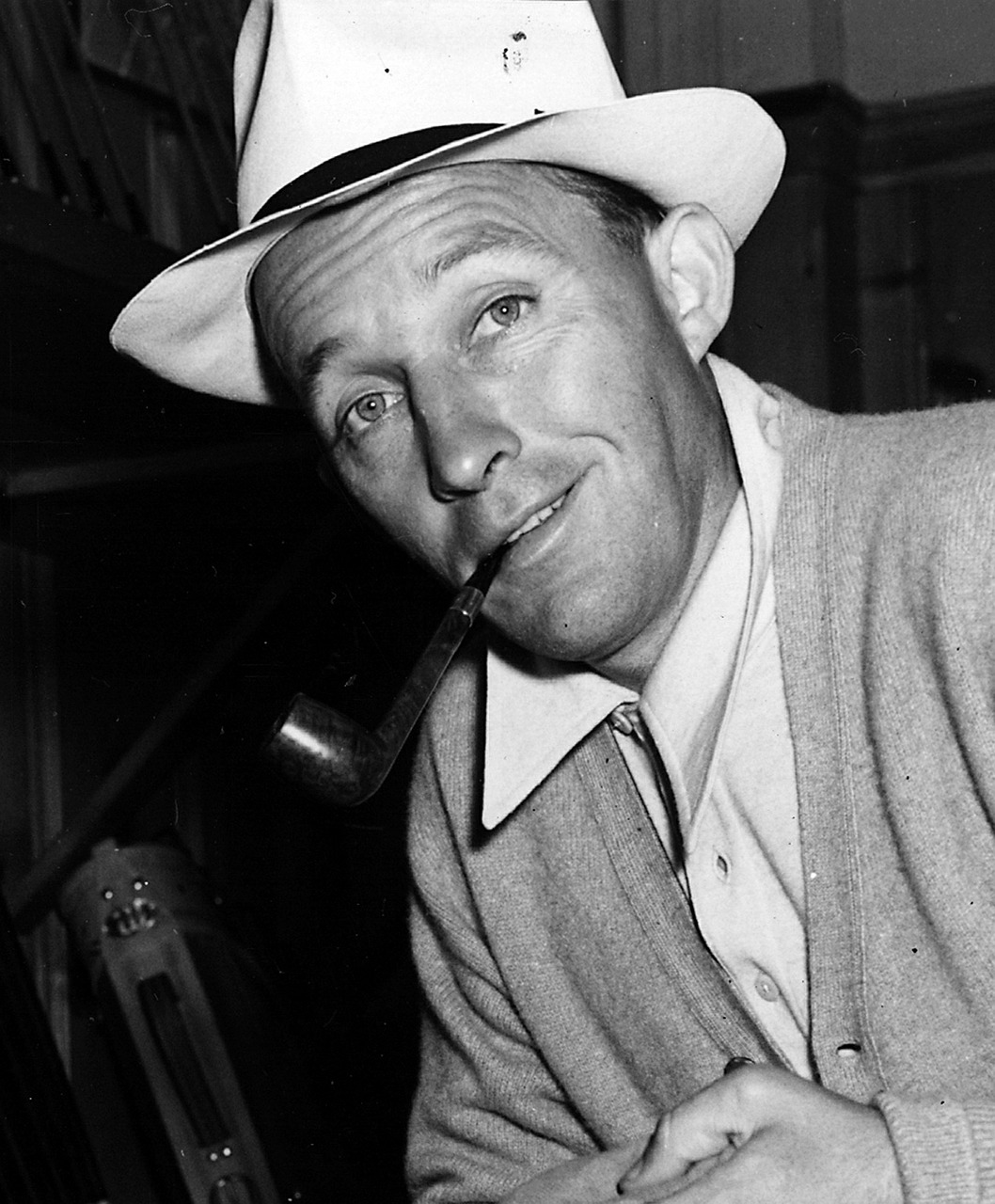“In the battle against par or against your opponent, you can’t think about much else, and the result, for me at least, is good therapy. For me, golf has been a kind of passport to relaxation and happiness.”
-Bing Crosby
For much of the 20th century Bing Crosby was one of America’s most prolific and beloved entertainers, but he found a significant portion of his own entertainment in golf. This book tells the story of how he lived his passion for the game and passed it on to others.
According to his son Nathaniel, co-author of the book, Crosby enjoyed the camaraderie of the game and he was also quite good at it. His wife Kathryn claims he was a member at 75 country clubs including Cypress Point Club, San Francisco Golf Club, and Seminole Golf Club. He made a hole-in-one thirteen times which included an ace on the 16th hole at Cypress Point Club in 1948. Crosby recounted the thrilling shot by saying, “I was shooting into the sun, so I just stood up and smacked one blind. The caddy (sic) said it looked pretty close, but I didn’t think it was in the hole . . . By the time I got to the clubhouse, there was quite a quorum present. The bar was opened and the drinks, of course, were on me. The tab went about $700, but it was well worth it, considering the magnitude of the exploit.”
Crosby was well acquainted with many legendary golfers including Ben Hogan and Jackie Burke Jr., the latter being Nathaniel’s godfather. His golf had a very strong international flavor to it as he enjoyed playing not only in America but also all over the world. According to this book Crosby played in the British Amateur in 1950 at St. Andrews, and the following year he was elected to the Royal and Ancient Golf Club of St. Andrews by its first American captain, Francis Ouimet. He also played in the U.S. Amateur at Winged Foot.

In explaining the important role that golf played in his life Crosby said, “Golf has been very good to me, and I’m grateful. Being a fair player, it has been possible for me, anywhere I go all over the world, to establish associations and friendships and to entertain myself in a healthy, relaxing exercise. As a fellow who travels quite a great deal, that has always seemed important to me. I can always find a golf game, whether it’s in Pocatello or Popocatepetl. I compliment myself, also, that, although approaching my mid-fifties, I can still make a decent showing in competitive golf. I don’t know any other sport where this could be possible. But I suppose I’m most grateful to golf because, through the years, it has provided such a wonderful relief from tensions, from the problems of show business. I’ve found that the golf links is not a place for brooding or soul-wrestling. You leave all that on the first tee, and you feel a lot better when you come in.”
In 1937 Crosby combined his love of golf with his position as one of America’s premier entertainers to start the Bing Crosby Pro-Am later known as the Crosby Clambake, which would eventually turn into the AT&T Pebble Beach National Pro-Am. The event started at the Rancho Santa Fe Country Club and eventually moved to Pebble Beach and other courses on the Monterey Peninsula. In describing the opportunity to host a tournament on the Monterey Peninsula Crosby said, “To be allowed to stage a golf tournament in such environs is like the Louvre granting choice gallery space to an aspiring artist so he can display his efforts.” He also said, “Pebble Beach is the Louvre. It just isn’t the Louvre, it’s everything in the Louvre, too, with all the artists gathered around.” The book describes the importance that Crosby placed on the charity aspect of the tournament throughout his life. According to Nathaniel, “The pro-am concept that is a staple of virtually every PGA Tour event today, with proceeds earmarked for charity, was Dad’s idea.”
While Crosby is the main topic of the book, it’s also very much about how he passed a love of golf onto his son Nathaniel who was also quite a good golfer. The book describes how Nathaniel won the 1981 U.S. Amateur Championship at his hometown Olympic Club in San Francisco several years after his father’s death and what it meant to both Nathaniel and Crosby’s friends many of whom had become Nathaniel’s friends as well. The book also recounts Nathaniel’s experience playing the European Tour for several years, taking over his father’s duties as the head of the pro-am tournament, and running several golf companies. Nathaniel has led a fascinating life in the world of golf as well, and his story is an interesting one.
This book is a fantastic, quick read. Bing Crosby was passionate about golf and he leveraged his many resources to make sure that he and those around him enjoyed the game, which was especially true with Nathaniel. They were able to live the golfing life that many of us dream of as they were able to play regularly all over the world anywhere from a local municipal course to the most exclusive clubs. The book does give the impression that they both appreciated this rare privilege and respected the game and the joy that it brought to their lives. The book is fairly short, but if you’re looking for a quick introduction to the impact that golf had on the Crosby family and the influence they’ve had on the game this is a good book to read.
